11+ Tourism Strategic Plan Examples to Download
Tourism is one of the most important elements that can constitute to economic stability for every city.
In fact, for many regions all around the world, tourism is one of their main sources of financial security. These foreign and local visitors have a massive economic impact on the places they visit. They are a major source of income for a city with a travel destination to boast of. You may also see simple business plan examples.
Tourism Strategic Plan Example
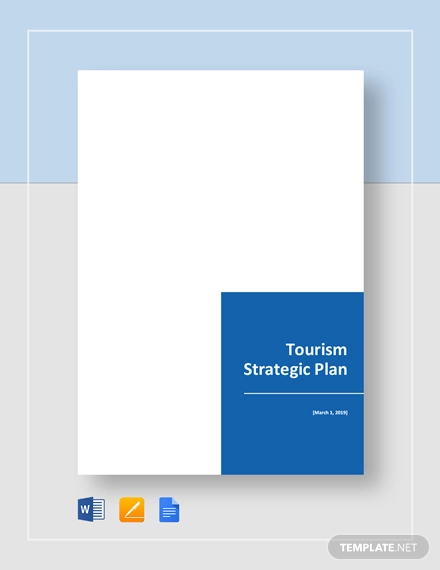
Developing a Tourism Strategy Plan
Plus, having these sightseers all year round would mean new job positions available for the community to be able to cater to the arduous needs of making a place homelike for the travelers.
In 2016, Tourism gave an estimated number of 108,741,000 people permanent jobs, and this number rises every year. With all the hotels, resorts, restaurants, bars, and local shops springing up in response to the needs of the crowd, new job positions are created and more money flows into the tourism economy’s pockets. You may also like risk plan examples.
Aside from these numbers, tourism is also a huge help in terms of spreading and preserving the city’s cultures and traditions. Why do people travel?
To see new places and its unique people! Nobody simply goes to a place to bathe in its waters and eat its food. No. They unconsciously take something intangible from it too. Tourists would notice the custom of the people—the way they eat, or the way that they sing and dance, or the way that they speak and interact with each other. You may also check out work plan examples.
Tourists also notice these things. And it is an assurance that they will also take the experiences they’ve had with them when they go back to their own people. This is how you preserve the ways of an ethnicity. By letting other people see and encounter it. Fortunately for all of us, tourism has made this possible and easy. You might be interested in weekly plan examples.
Strategic Tourism Planning Process
ASEAN Tourism Strategic Plan
Tourism cannot rely on people and their whims. Which means that a travel destination can’t simply wait for tourists to come to them. What they do is they advertise. They make their name known. They spread the word about the amazing, luxurious vacation time they offer that is so irresistible it makes you squirm in your seat for wanting it too much. You may also see daily plan examples.
But tourist spots cannot simply throw out an advertising pitch and expect people to come running to them in answer. Tourism is a business, and advertising is a marketing strategy. And marketing strategies need to be planned ahead.
What Is Tourism Strategic Planning?
Even if your vacation was heavenlike in perfection and your experience unequaled in bliss, there is nothing innocent and arbitrary about it. Each tiny part of your experience is the product of a systematically organized scheme to make you love the location and the service so that you’d come back more willing to spend money on the place and all the things it can offer to you. You may also like transition plan examples.
Perhaps the place is naturally beautiful, but everything else is set up by businessmen to attract more tourists. This is an objective they have achieved and perfected through a conscientiously obeyed strategic plan.
Before, strategic planning was only used for things that are tangible, things that people can actually see and touch, like the finished product of a shoe factory or the cheesecake of a pastry shop. However, people have discovered that this technique is not only applicable but also very much effective for intangible products such as services, hospitality, and entertainment.
Strategic planning is important in the tourism industry because it keeps them aware of the latest trends that they can incorporate in their services, and also because it helps them learn more tricks on how to make their customers satisfied. Knowledge of these two simple things is considered a strong advantage against competitors, and can allow the management to work smoothly and effectively. You may also check out sales plan examples.
Tourism strategic planning works by identifying and recognizing the customer and his needs and wants, for the purpose of aiming to answer to them. This is the rule by which strategic planning revolves. It’s straightforward, which makes it even more practical and potent especially in the tourism industry. You might be interested in quality plan examples.
Strategic Tourism Development Plan
Tourism Strategic Plan
Tourism Strategic Plan Goals and Objectives
In its most basic definition, strategic planning, whether in tourism or not, is a plan of action that can lead an organization to a desired outcome or objective. It is an approach that is especially designed to meet the needs of the management while also taking into consideration their abilities and resources and the opportunities that are available in their field of work. You may also see advertising plan examples.
Strategic planning is an ever-revolving door. It is never stagnant and rarely constant because the market is also a dynamic world and a strategic plan has to keep up with it. This nature of a strategic plan, specifically in the tourism industry, is what makes it efficient. It is always answering the needs of the crowd it caters to while not neglecting the long-term goals they have for their system.
What Is the Importance of Strategic Planning?
1. Strategic planning provides an organization with a sense of direction.
Since basically every business field is filled with competitors trying to better each other, being lost while vying against them is not going to be helpful to the success of an organization. A strategic plan can keep this from happening. It can provide a detailed map of where you are versus where you want to be. So if even if you face setbacks that can stray you from your destination, you will have a strategic plan to put you back on track. You may also see daily plan examples.
2. Strategic planning sets goals.
And without goals, an organization will find themselves right where they are years from today. Goals set a company in motion. It encourages them to work and achieve. A goal is the enactment of a company’s mission statement. It defines the very essence of an organization.
3. Strategic planning helps you evaluate your progress.
Sometimes, sales percentage and profit don’t necessarily define an organization’s progress. There are other, many things that can lead up to it. For you to be able to identify them, you would need a concrete record of your organization’s previous performances.
A strategic plan serves this purpose. It is important for an organization to know if their efforts are being fruitful or not so that they can make the necessary adjustments. If their attempts are productive, they can maintain or improve it to gain the same results. If they are not, however, then at least they are aware of it so that they can alter it to have implicit results. You may also check out advertising plan examples.
4. Strategic planning can make responsibilities clear.
The goals set in a strategic plan are not for one person only. Usually, it is for the whole organization to work toward. Which means that people are going to collaborate to make it happen, and the tasks needed to be done will be divided among the members of the organization. These tasks, when clearly stated, can boost the productivity of the members since they can actually see the things that they need to do. You might be interested in job plan examples.
Making their tasks clear and well-understood and their goals defined and cemented can help the constituents of an organization to work more methodically toward the common target.
ABCDs of Tourism Strategic Planning
5-Year Tourism Strategic Plan
Tourism Strategic Map
Creating a Tourism Strategic Plan
1. Evaluate your products.
What are the attractions and infrastructures that your tourism destination can offer to its clients and customers? Have they reached international quality already or are they yet to be on that level? Survey the many parts of your business altogether and decide which parts need to be developed and which ones have already reached their highest potential. If you see an opportunity to improve anything, it is important to grab the chance. You may also see event plan examples.
Listen and observe how your patrons react to your services. This is one of the most honest feedback you can receive. Although they may not always be positive and nice, they are always helpful.
Do they like your food? The ambiance of the place? The cleanliness of the location? The general hospitality and friendliness of the crew? Oftentimes, these are the tiny nuances that resound the loudest in the memory of your customers. Design your strategic plan in a way that can address the faults in your facility. You may also like action plan examples.
2. Analyze your strengths.
This is the only factor that you can rely on as you try to amend the shortcomings of your services. Your main resources are your people and their abilities. If you harness them properly, they can be enough to solve any of your present predicaments.
Once you have identified your organization’s problems, decide on how to make them right by assigning the right people to do the job. Proper dissemination is often the only secret to effective management. Knowing the abilities of your members and making them do tasks that are in accordance to their strengths can lead to more productive performances and more effective execution. You may also check out implementation plan examples.
3. Implement your solutions.
Once you identify the issues your organization is concerned about, the next step, as discussed above, is to understand the strengths of your members and assign them to do the tasks that you are assured they can do well in. When these things are through, you can now make the whole organization start implementing the answers to your problems. You might be interested in financial plan examples.
This part is perhaps the most difficult part of writing and realizing a strategic plan because sticking to a plan of action with a group of people you have to handle is difficult work. However, this can be made easier by including into your strategic plan a specific set of steps that you and your group can follow to make the process easier and less daunting-looking. You may also see personal plan examples.
Tourism and Attraction Developmental Plan
Economic Development and Tourism Strategy Example
The effectiveness of a tourism strategic planning is based only on two factors: designing it and executing it. Get a clear view of the issues you are facing and design your strategic plan according to it. Afterward, include specific steps that the group can follow to make the journey at least less scary.
11+ Tourism Strategic Plan Examples to Download

Tourism is one of the most important elements that can constitute to economic stability for every city.
In fact, for many regions all around the world, tourism is one of their main sources of financial security. These foreign and local visitors have a massive economic impact on the places they visit. They are a major source of income for a city with a travel destination to boast of. You may also see simple business plan examples.
Tourism Strategic Plan Example

Details
File Format
Google Docs
MS Word
Pages
Size: A4, US
Developing a Tourism Strategy Plan

slideshare.net
Details
File Format
PDF
Size: 44 KB
Plus, having these sightseers all year round would mean new job positions available for the community to be able to cater to the arduous needs of making a place homelike for the travelers.
In 2016, Tourism gave an estimated number of 108,741,000 people permanent jobs, and this number rises every year. With all the hotels, resorts, restaurants, bars, and local shops springing up in response to the needs of the crowd, new job positions are created and more money flows into the tourism economy’s pockets. You may also like risk plan examples.
Aside from these numbers, tourism is also a huge help in terms of spreading and preserving the city’s cultures and traditions. Why do people travel?
To see new places and its unique people! Nobody simply goes to a place to bathe in its waters and eat its food. No. They unconsciously take something intangible from it too. Tourists would notice the custom of the people—the way they eat, or the way that they sing and dance, or the way that they speak and interact with each other. You may also check out work plan examples.
Tourists also notice these things. And it is an assurance that they will also take the experiences they’ve had with them when they go back to their own people. This is how you preserve the ways of an ethnicity. By letting other people see and encounter it. Fortunately for all of us, tourism has made this possible and easy. You might be interested in weekly plan examples.
Strategic Tourism Planning Process
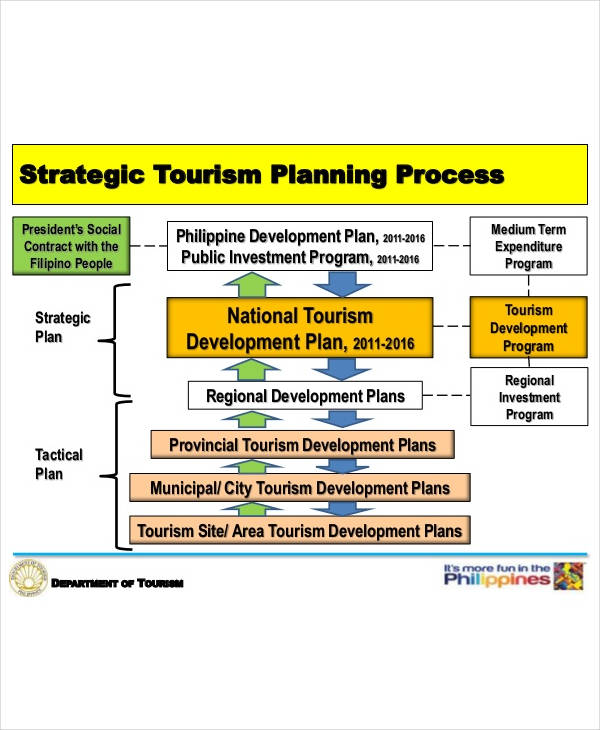
slideshare.net
Details
File Format
PDF
Size: 71 KB
ASEAN Tourism Strategic Plan
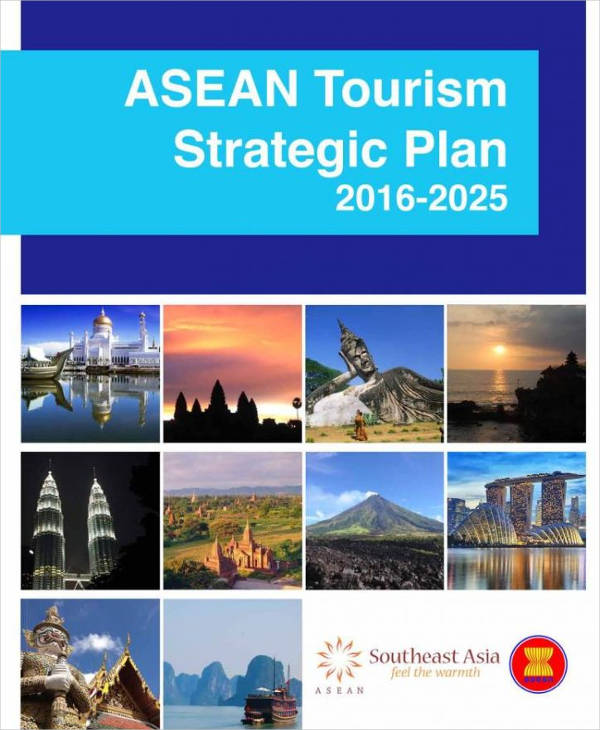
mekongtourism.org
Details
File Format
PDF
Size: 101 KB
Tourism cannot rely on people and their whims. Which means that a travel destination can’t simply wait for tourists to come to them. What they do is they advertise. They make their name known. They spread the word about the amazing, luxurious vacation time they offer that is so irresistible it makes you squirm in your seat for wanting it too much. You may also see daily plan examples.
But tourist spots cannot simply throw out an advertising pitch and expect people to come running to them in answer. Tourism is a business, and advertising is a marketing strategy. And marketing strategies need to be planned ahead.
What Is Tourism Strategic Planning?
Even if your vacation was heavenlike in perfection and your experience unequaled in bliss, there is nothing innocent and arbitrary about it. Each tiny part of your experience is the product of a systematically organized scheme to make you love the location and the service so that you’d come back more willing to spend money on the place and all the things it can offer to you. You may also like transition plan examples.
Perhaps the place is naturally beautiful, but everything else is set up by businessmen to attract more tourists. This is an objective they have achieved and perfected through a conscientiously obeyed strategic plan.
Before, strategic planning was only used for things that are tangible, things that people can actually see and touch, like the finished product of a shoe factory or the cheesecake of a pastry shop. However, people have discovered that this technique is not only applicable but also very much effective for intangible products such as services, hospitality, and entertainment.
Strategic planning is important in the tourism industry because it keeps them aware of the latest trends that they can incorporate in their services, and also because it helps them learn more tricks on how to make their customers satisfied. Knowledge of these two simple things is considered a strong advantage against competitors, and can allow the management to work smoothly and effectively. You may also check out sales plan examples.
Tourism strategic planning works by identifying and recognizing the customer and his needs and wants, for the purpose of aiming to answer to them. This is the rule by which strategic planning revolves. It’s straightforward, which makes it even more practical and potent especially in the tourism industry. You might be interested in quality plan examples.
Strategic Tourism Development Plan
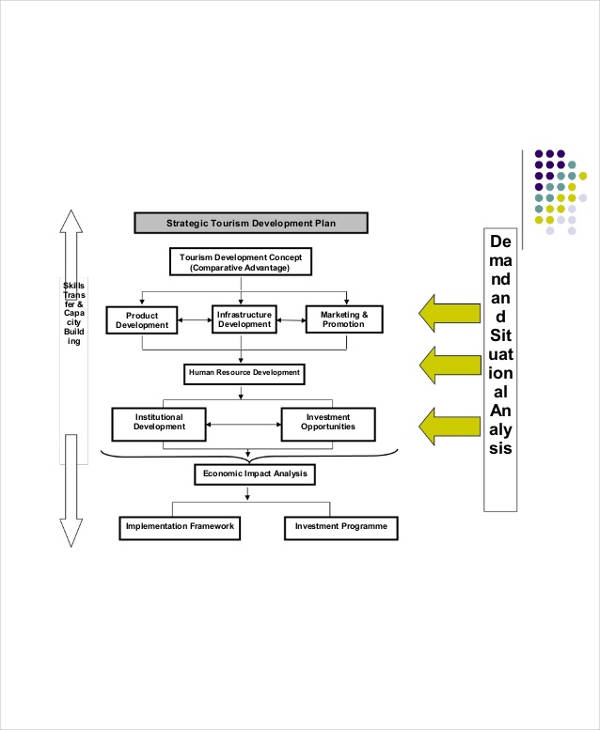
slideshare.net
Details
File Format
PDF
Size: 39 KB
Tourism Strategic Plan
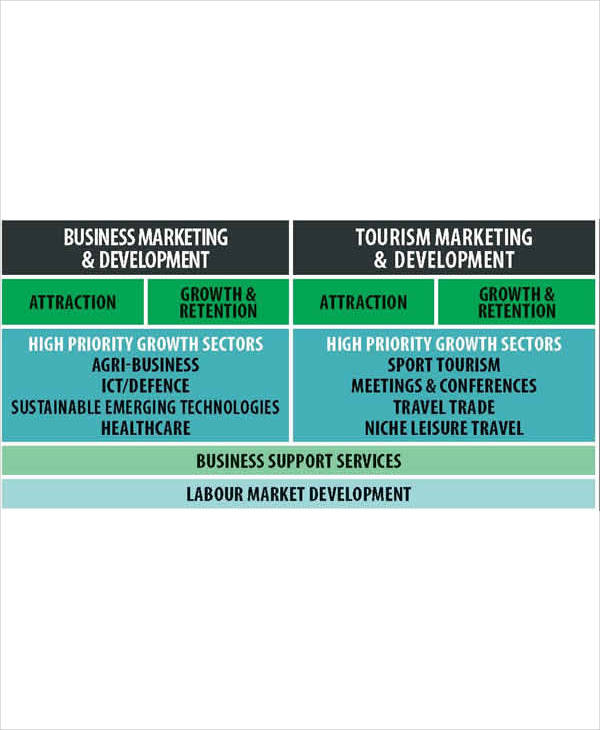
business.kingstoncanada.com
Details
File Format
PDF
Size: 41 KB
Tourism Strategic Plan Goals and Objectives

corporate.snowymountains.com.au
Details
File Format
PDF
Size: 777 KB
In its most basic definition, strategic planning, whether in tourism or not, is a plan of action that can lead an organization to a desired outcome or objective. It is an approach that is especially designed to meet the needs of the management while also taking into consideration their abilities and resources and the opportunities that are available in their field of work. You may also see advertising plan examples.
Strategic planning is an ever-revolving door. It is never stagnant and rarely constant because the market is also a dynamic world and a strategic plan has to keep up with it. This nature of a strategic plan, specifically in the tourism industry, is what makes it efficient. It is always answering the needs of the crowd it caters to while not neglecting the long-term goals they have for their system.
What Is the Importance of Strategic Planning?
1. Strategic planning provides an organization with a sense of direction.
Since basically every business field is filled with competitors trying to better each other, being lost while vying against them is not going to be helpful to the success of an organization. A strategic plan can keep this from happening. It can provide a detailed map of where you are versus where you want to be. So if even if you face setbacks that can stray you from your destination, you will have a strategic plan to put you back on track. You may also see daily plan examples.
2. Strategic planning sets goals.
And without goals, an organization will find themselves right where they are years from today. Goals set a company in motion. It encourages them to work and achieve. A goal is the enactment of a company’s mission statement. It defines the very essence of an organization.
3. Strategic planning helps you evaluate your progress.
Sometimes, sales percentage and profit don’t necessarily define an organization’s progress. There are other, many things that can lead up to it. For you to be able to identify them, you would need a concrete record of your organization’s previous performances.
A strategic plan serves this purpose. It is important for an organization to know if their efforts are being fruitful or not so that they can make the necessary adjustments. If their attempts are productive, they can maintain or improve it to gain the same results. If they are not, however, then at least they are aware of it so that they can alter it to have implicit results. You may also check out advertising plan examples.
4. Strategic planning can make responsibilities clear.
The goals set in a strategic plan are not for one person only. Usually, it is for the whole organization to work toward. Which means that people are going to collaborate to make it happen, and the tasks needed to be done will be divided among the members of the organization. These tasks, when clearly stated, can boost the productivity of the members since they can actually see the things that they need to do. You might be interested in job plan examples.
Making their tasks clear and well-understood and their goals defined and cemented can help the constituents of an organization to work more methodically toward the common target.
ABCDs of Tourism Strategic Planning
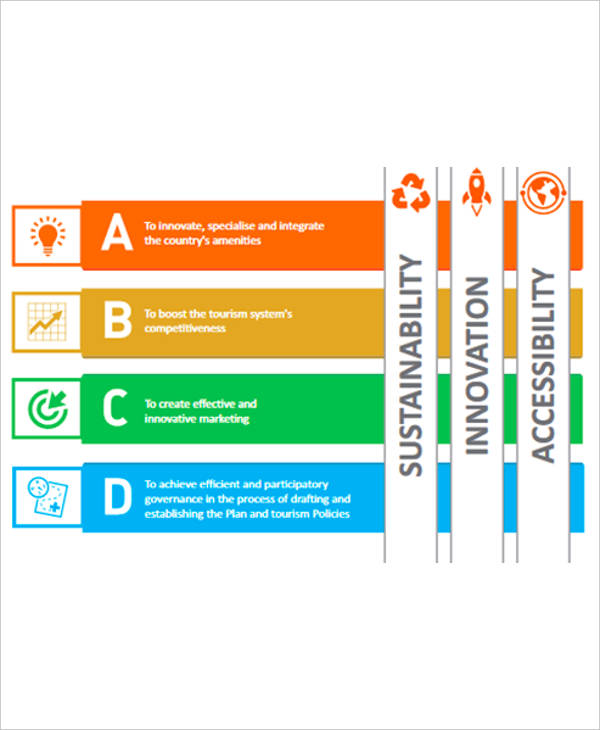
turismo.beniculturali.it
Details
File Format
PDF
Size: 67 KB
5-Year Tourism Strategic Plan
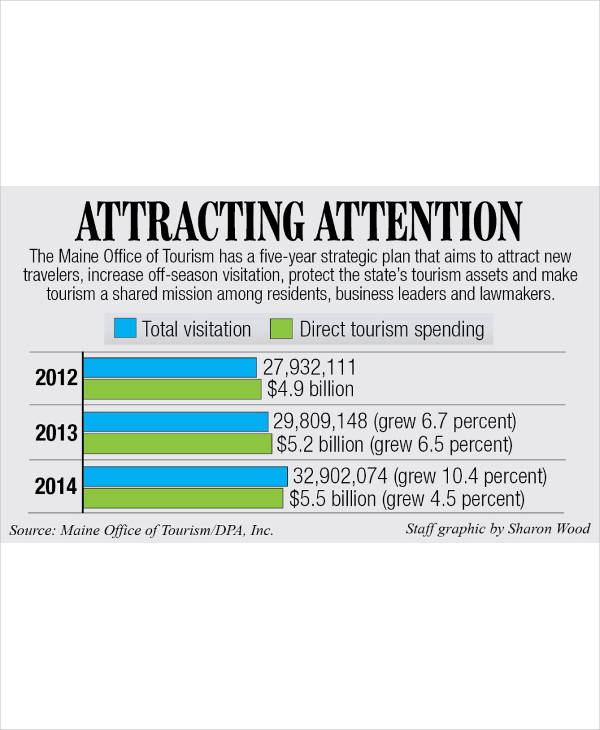
centralmaine.com
Details
File Format
PDF
Size: 113 KB
Tourism Strategic Map
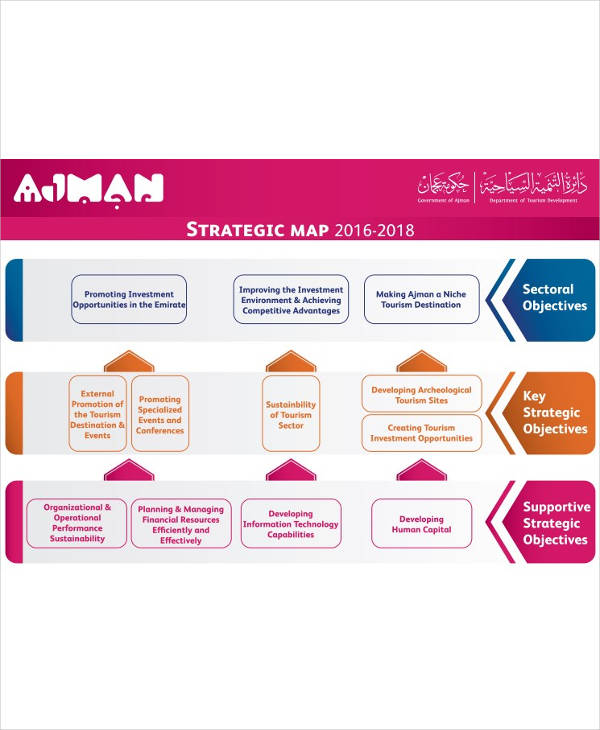
ajman.travel
Details
File Format
PDF
Size: 74 KB
Creating a Tourism Strategic Plan
1. Evaluate your products.
What are the attractions and infrastructures that your tourism destination can offer to its clients and customers? Have they reached international quality already or are they yet to be on that level? Survey the many parts of your business altogether and decide which parts need to be developed and which ones have already reached their highest potential. If you see an opportunity to improve anything, it is important to grab the chance. You may also see event plan examples.
Listen and observe how your patrons react to your services. This is one of the most honest feedback you can receive. Although they may not always be positive and nice, they are always helpful.
Do they like your food? The ambiance of the place? The cleanliness of the location? The general hospitality and friendliness of the crew? Oftentimes, these are the tiny nuances that resound the loudest in the memory of your customers. Design your strategic plan in a way that can address the faults in your facility. You may also like action plan examples.
2. Analyze your strengths.
This is the only factor that you can rely on as you try to amend the shortcomings of your services. Your main resources are your people and their abilities. If you harness them properly, they can be enough to solve any of your present predicaments.
Once you have identified your organization’s problems, decide on how to make them right by assigning the right people to do the job. Proper dissemination is often the only secret to effective management. Knowing the abilities of your members and making them do tasks that are in accordance to their strengths can lead to more productive performances and more effective execution. You may also check out implementation plan examples.
3. Implement your solutions.
Once you identify the issues your organization is concerned about, the next step, as discussed above, is to understand the strengths of your members and assign them to do the tasks that you are assured they can do well in. When these things are through, you can now make the whole organization start implementing the answers to your problems. You might be interested in financial plan examples.
This part is perhaps the most difficult part of writing and realizing a strategic plan because sticking to a plan of action with a group of people you have to handle is difficult work. However, this can be made easier by including into your strategic plan a specific set of steps that you and your group can follow to make the process easier and less daunting-looking. You may also see personal plan examples.
Tourism and Attraction Developmental Plan
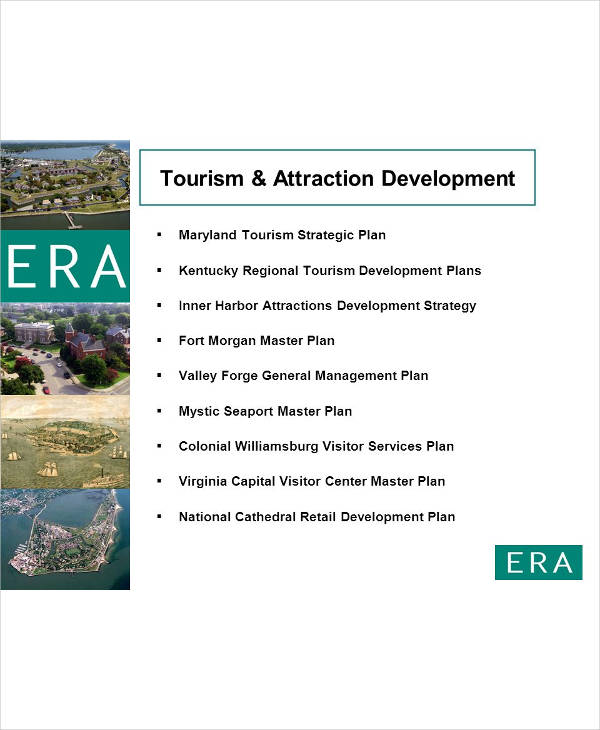
slideplayer.com
Details
File Format
PDF
Size: 106 KB
Economic Development and Tourism Strategy Example
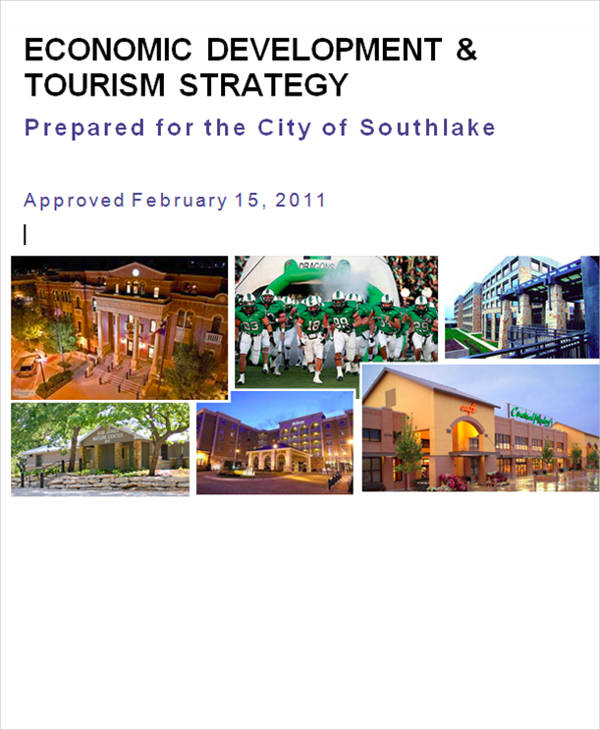
cityofsouthlake.com
Details
File Format
PDF
Size: 458 KB
The effectiveness of a tourism strategic planning is based only on two factors: designing it and executing it. Get a clear view of the issues you are facing and design your strategic plan according to it. Afterward, include specific steps that the group can follow to make the journey at least less scary.

